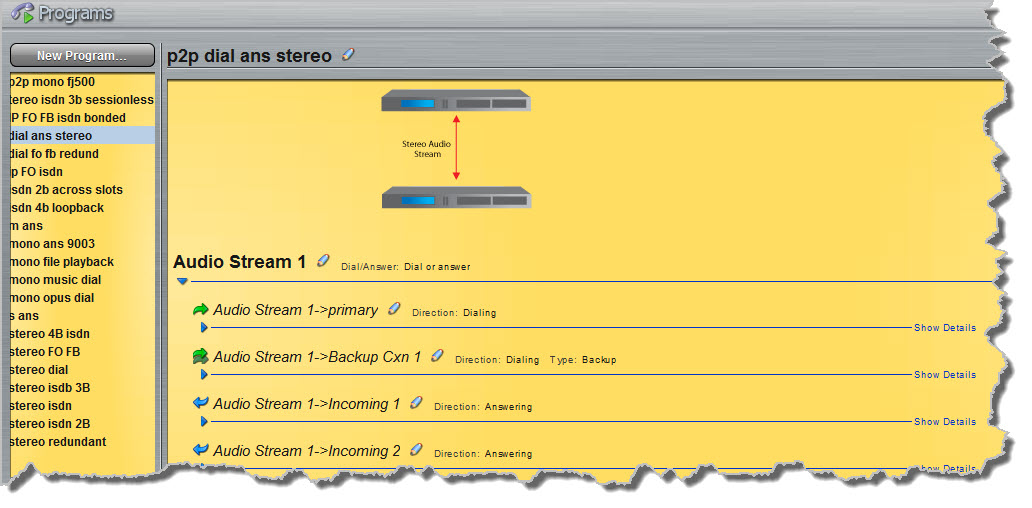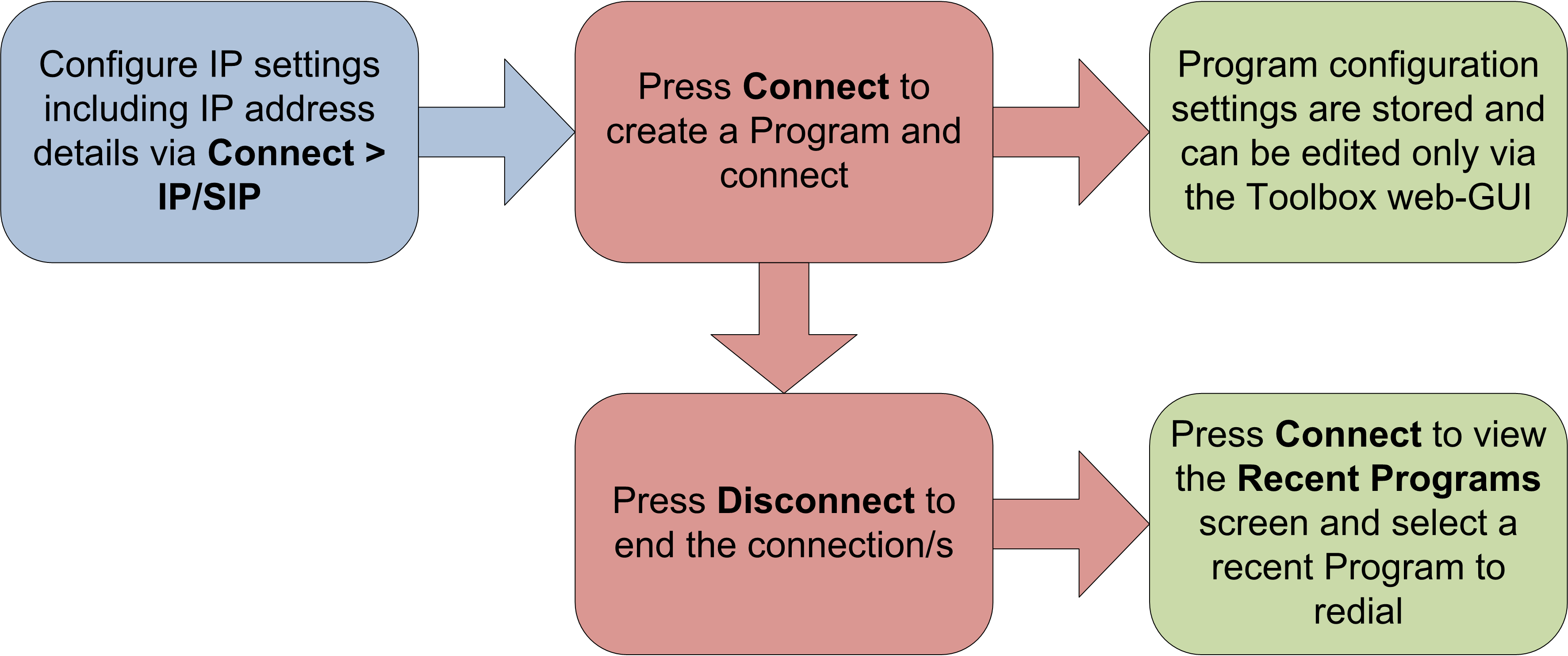About Program Dialing
What Defines a Program?
Tieline Genie and Merlin codecs use programs to connect to another codec. A Program configures a Tieline codec to send or receive one or more Audio Streams based upon the particular application the codec is being used for at any given time. The attributes of the audio stream and associated connections are embodied within a program when it is created, including the configuration, dialing and answering parameters.
Tieline Genie and Merlin codecs operate similarly to Tieline G3 codecs. By default, Tieline codecs send proprietary session data when connecting to each other in order to establish, manage and terminate connections. When a connection between two codecs is established:
1.The dialing codec sends information about how the codec receiving the call should be configured.
2.Once the codec receiving session data from the dialing codec has received information successfully, it sends an acknowledgement to the dialing codec and streaming can commence.
For example, if you configure a standard stereo program on the dialing codec using a particular algorithm and bit rate settings etc., these settings will be configured on the dialing codec when the codec connects. It is also possible to lock a loaded program in a codec to ensure the currently loaded program cannot be unloaded by a codec dialing in with different program settings.
For example, if your routing requirements require the codec at the studio to always connect in mono, simply load and lock a mono program in the codec. Generally programs will be up or down-mixed by the answering codec to match the loaded program type. In some situations incompatible program types will be rejected.
Defining Audio Streams within Programs
Each audio stream within a program can be defined separately and contain a variety of settings relating to the number of connections (e.g. primary and backup) and the number of destinations to which each audio stream is distributed. Each audio stream is capable of being configured to include dial and answer connections, dial connections only, or answer connections only. Each audio stream has its own:
•Name.
•Connection, Transport, and Destination settings.
•Backup configuration options.
The following image displays a simple peer-to-peer program in the Programs panel within the Java Toolbox Web-GUI, which can be used to configure and edit all program parameters. The program displayed is configured to send a single stereo audio stream and will allow the codec to both answer and dial (via dialing and answering connections) if required. A backup dialing connection is configured in case the primary connection fails.

Creating Programs
Only the simplest peer-to-peer (point-to-point) programs can be created using the codec front panel. The Java Toolbox web-GUI contains a Programs panel with a wizard for configuring program settings and backup connections. Edit settings easily at the touch of a button and use existing programs as templates for creating other programs.
Mono and Stereo Peer-to-Peer Programs
New peer-to-peer programs can be created using the codec front panel keypad (see Steps to Connect over IP). If you know the IP address of the codec you want to dial then all you need to do is enter this into the codec, choose your preferred connection settings and then press CONNECT ![]() .
.
Front panel configured programs are automatically saved as Recent Programs which retain all the audio stream dialing and configuration information. These Recent Programs are displayed when you press the CONNECT ![]() button from within any menu except the IP Mode or SIP Mode screens, or the Connect IP or Connect SIP screens.
button from within any menu except the IP Mode or SIP Mode screens, or the Connect IP or Connect SIP screens.
Ensure you configure all the correct connection settings when using the codec front panel, because these are stored as part of the program's profile when you first connect. They cannot be adjusted afterwards without using the editing features in the Program panel within the Toolbox Web-GUI.
|
Important Note: When configuring a connection use the Save function in the Connect IP and Connect SIP screens to save programs permanently to the codec's Programs menu. Otherwise they are stored to the Recent Programs list and will be overwritten after several calls have been made. |

Peer-to-peer connection configured via the codec front panel
